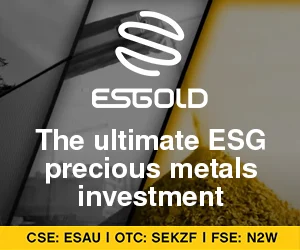In the world of precious metals, gold and silver have long been viewed as safe-haven assets and stores of value. Investors often turn to these metals during times of economic uncertainty, inflation, or geopolitical tensions. However, the relationship between gold and silver is complex, and understanding whether these two metals are cointegrated can provide valuable insights for investors. This article delves into the recent trends in gold and silver prices, their historical relationship, and the implications of their potential cointegration.
Understanding Cointegration
Cointegration is a statistical property of time series variables that indicates a long-term equilibrium relationship between them, even if they are non-stationary on their own. In simpler terms, two or more time series can drift apart in the short term but will tend to move together over the long term. For investors, identifying cointegrated assets can be beneficial for hedging strategies and portfolio diversification.
Recent Trends in Gold and Silver Prices
In recent months, both gold and silver have exhibited similar price trajectories, driven by a combination of factors including inflation concerns, interest rate fluctuations, and global economic uncertainty. Gold, often seen as the ultimate safe-haven asset, has seen its price rise as investors flock to it during turbulent times. Silver, while also benefiting from these trends, has additional industrial demand factors influencing its price, particularly in sectors like electronics and renewable energy.
The correlation between gold and silver prices has been particularly strong during periods of economic instability. For instance, during the COVID-19 pandemic, both metals surged as investors sought refuge from market volatility. This trend has continued, with both metals experiencing price increases in response to ongoing geopolitical tensions and inflationary pressures.
Historical Relationship Between Gold and Silver
Historically, gold and silver have maintained a close relationship, often referred to as the gold-silver ratio. This ratio indicates how many ounces of silver are needed to purchase one ounce of gold. Over the years, this ratio has fluctuated, reflecting changes in market dynamics, investor sentiment, and economic conditions.
In times of economic growth, the gold-silver ratio tends to increase as gold outperforms silver. Conversely, during economic downturns or periods of high inflation, silver often outperforms gold, leading to a decrease in the ratio. Understanding this historical context is crucial for investors looking to capitalize on the potential cointegration of these two metals.
Analyzing Cointegration Between Gold and Silver
Recent analyses have suggested that gold and silver may indeed be cointegrated, particularly following their recent price movements. Statistical tests, such as the Engle-Granger test, can be employed to determine whether a long-term equilibrium relationship exists between the two metals. If the tests confirm cointegration, it would imply that while short-term price fluctuations may occur, the two metals are likely to revert to a long-term relationship.
Investors can leverage this information to make informed decisions. For example, if gold prices rise significantly, and silver prices lag behind, investors might consider buying silver in anticipation of a price correction that aligns with gold’s trajectory. Conversely, if silver prices surge, it may indicate a shift in market sentiment that could impact gold prices as well.
Implications for Investors
The potential cointegration of gold and silver carries significant implications for investors. Understanding the relationship between these two metals can enhance portfolio diversification strategies. For instance, investors may choose to allocate a portion of their portfolio to both gold and silver to hedge against inflation and economic uncertainty.
Moreover, the historical patterns observed in the gold-silver ratio can guide investment decisions. By monitoring this ratio, investors can identify potential entry and exit points for trading both metals. Additionally, the industrial demand for silver, coupled with its historical correlation with gold, can provide unique opportunities for investors looking to capitalize on market trends.
Conclusion
In conclusion, the relationship between gold and silver is multifaceted, influenced by a variety of economic factors and historical trends. The potential cointegration of these two precious metals suggests that they may continue to move in tandem over the long term, despite short-term fluctuations. For investors, understanding this relationship can provide valuable insights for making informed decisions in the precious metals market. As both metals continue to respond to global economic conditions, keeping a close eye on their price trajectories and the gold-silver ratio will be essential for navigating the complexities of investing in these timeless assets.



